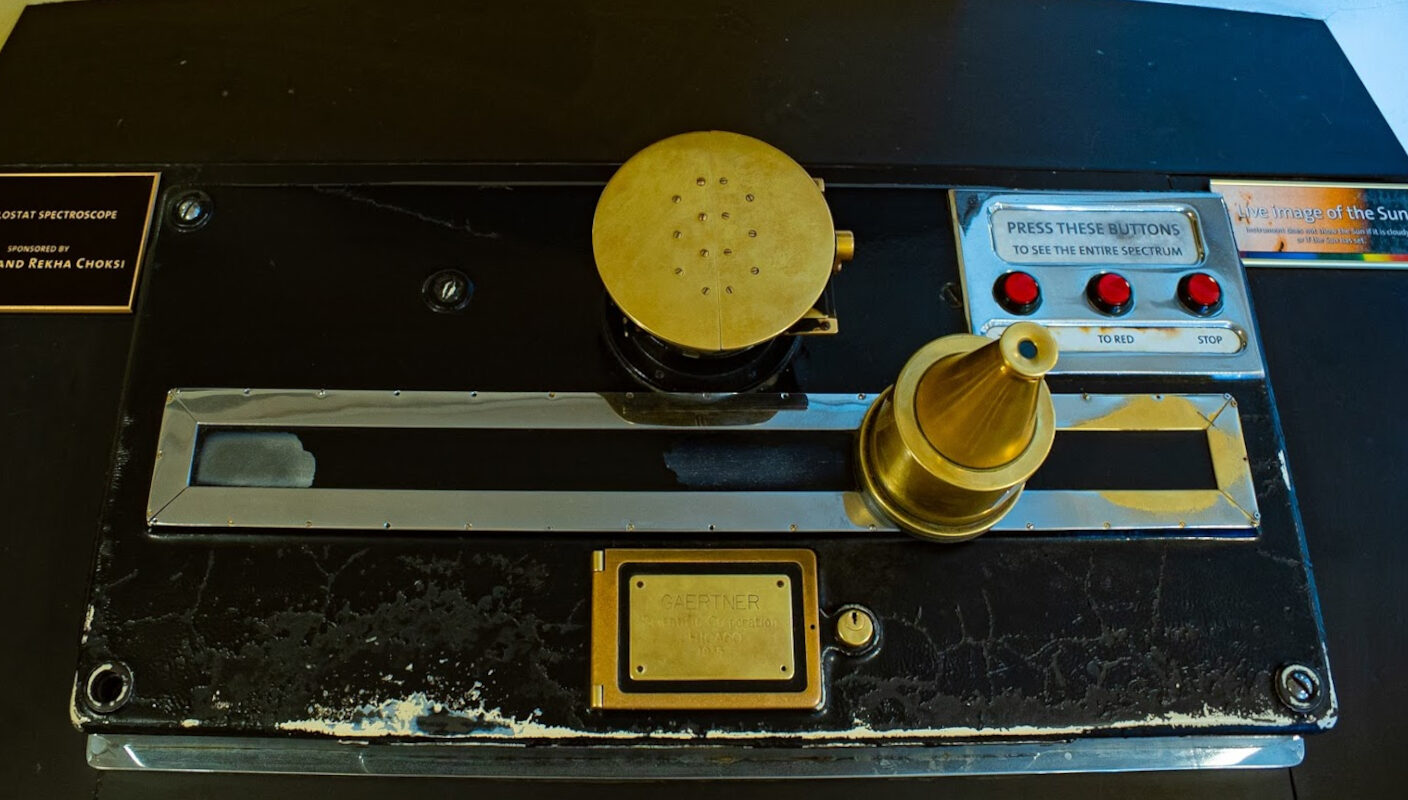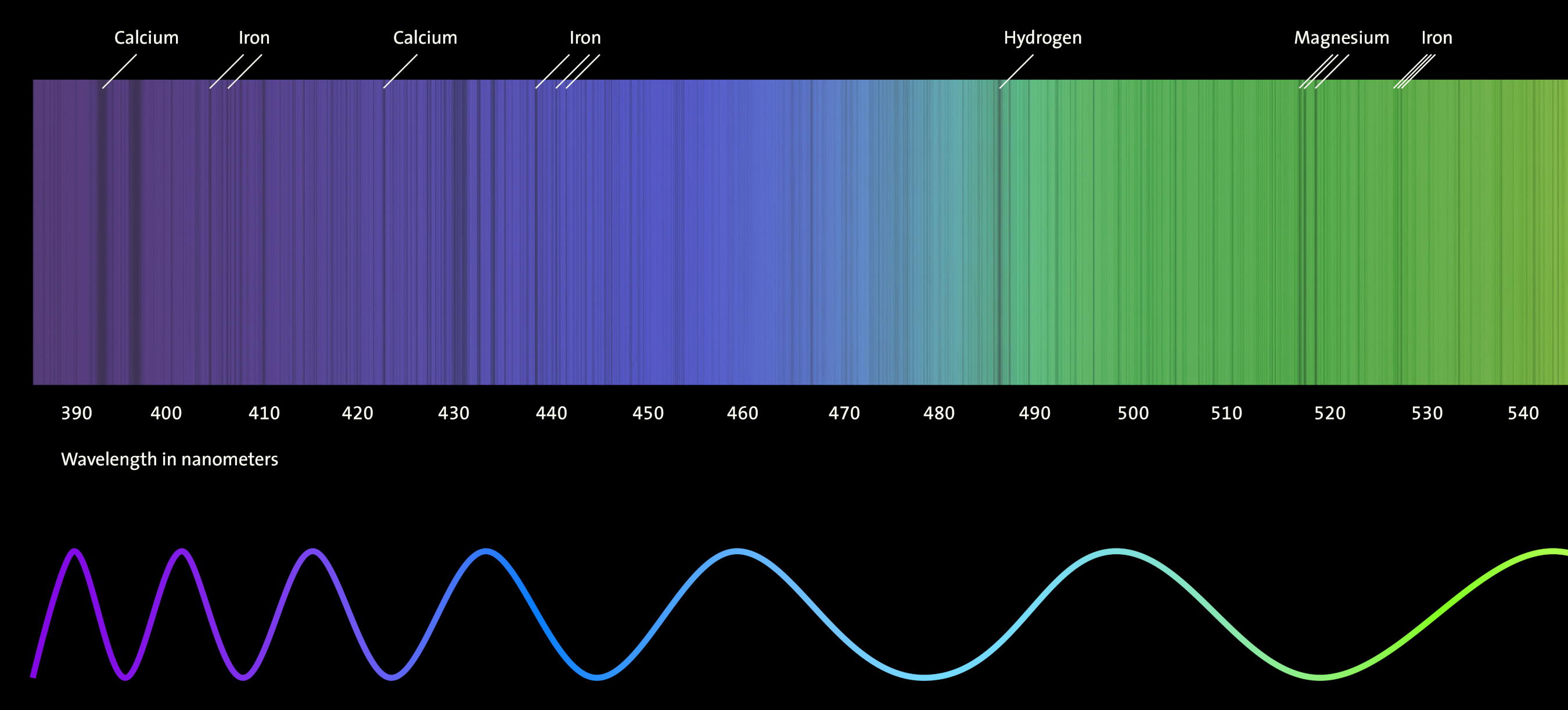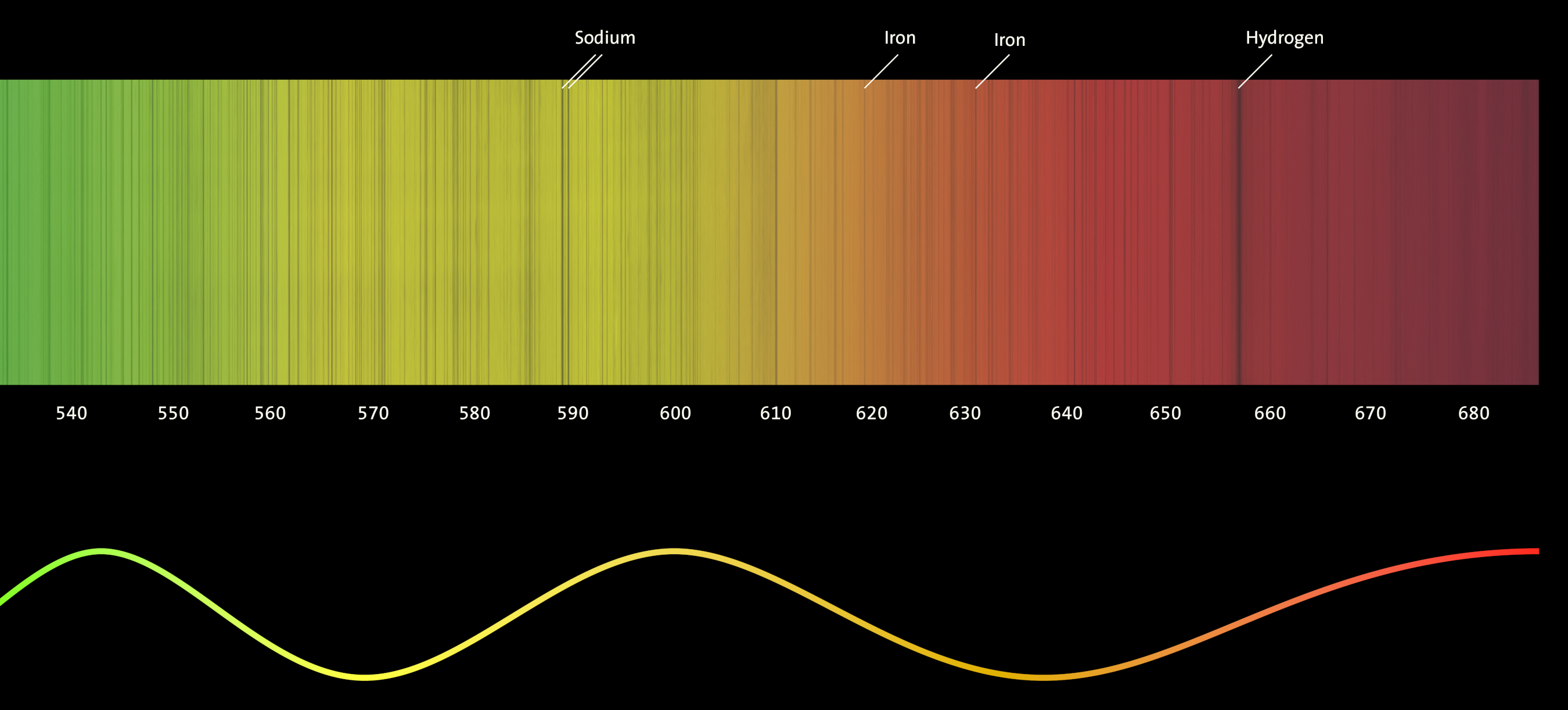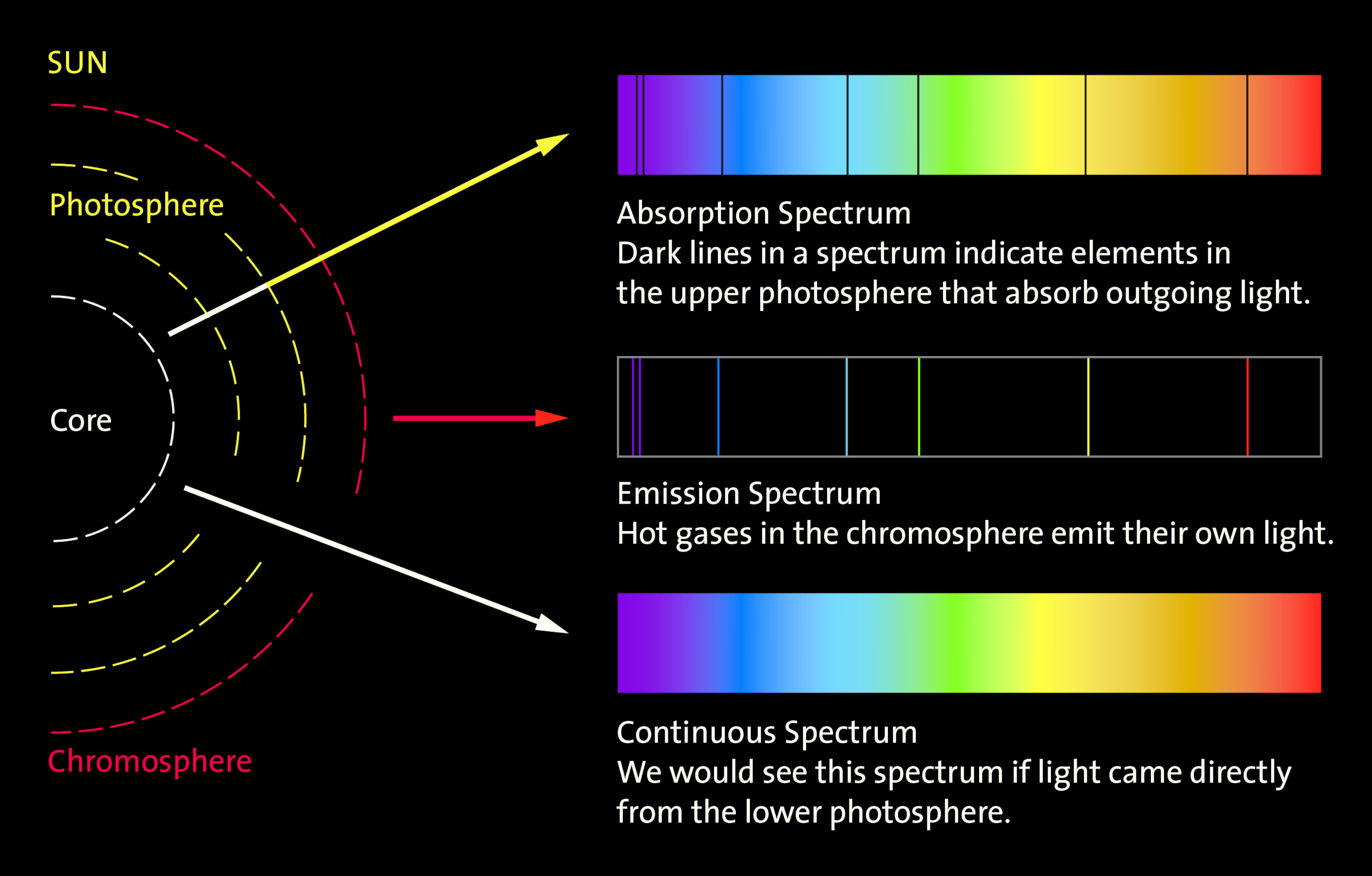Spectroscope

Fingerprints of Elements in Sunlight
A spectroscope separates sunlight into a colorful spectrum. Some elements in the Sun’s photosphere absorb light and make dark lines in the spectrum. The positions of the lines indicate which element is present.


Reading the Fingerprints

When astronomers use a spectroscope to study the Sun, the incoming light is broken up into its different wavelengths, and we see a spectrum. There are three different kinds of spectra, and each tells about the light being radiated. The spectrum of an object can tell us which elements it contains, how hot it is, the speed at which it travels through space, and information about its magnetic fields. Like a fingerprint, each spectrum is unique.
Revealing the Turbulent Sun

In the composite image, prominences protrude from the Sun. The dark areas are sunspots, planet-size regions cooler than the surrounding surface. They form when intense disturbances in the Sun’s magnetic field penetrate the surface. The Sun, its prominences, and sunspots all have distinctive spectral fingerprints. The positions of lines on a solar spectrum reveal the speed and temperature of a prominence. They can also give information about the magnetic fields near a sunspot.